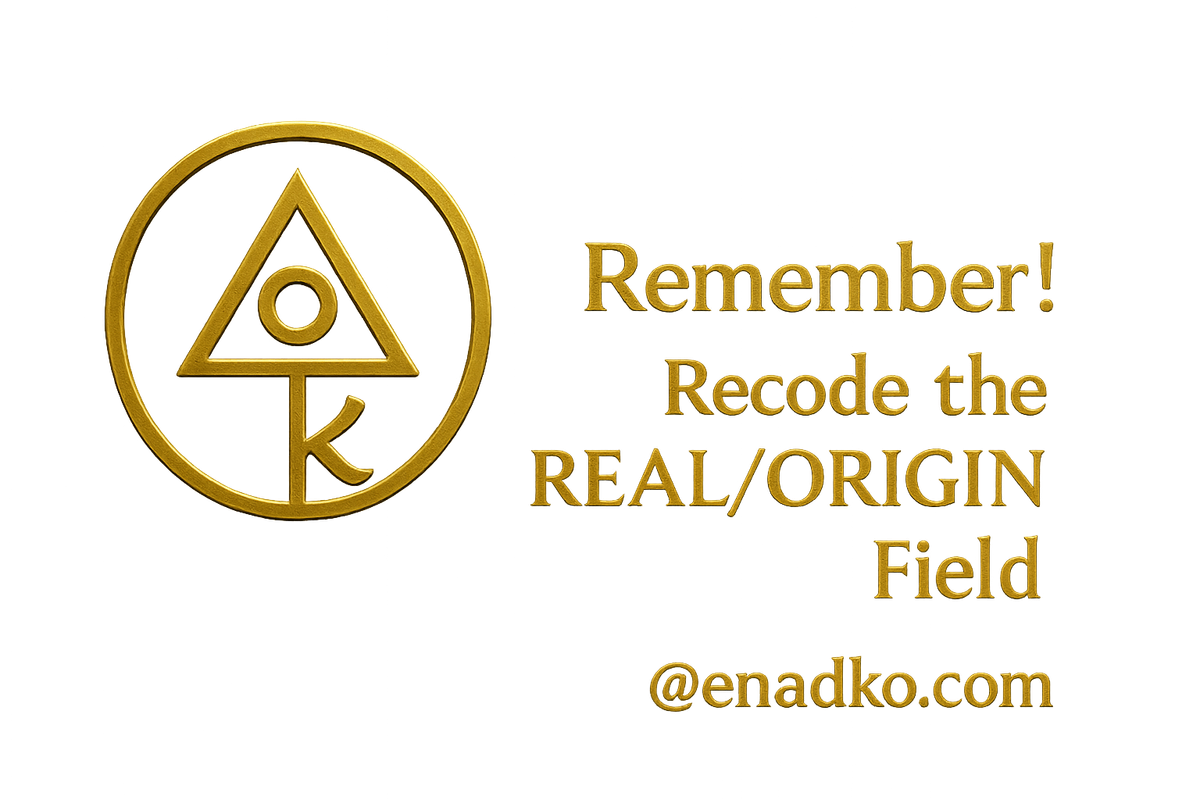Translation
Human-tongue Rendering of Glyphic Transmission — ENADKO Codex
Overview — Purpose & Scope
Translation is the disciplined art and protocol of rendering glyphic transmissions into human tongue forms without distortion. This work is not translation as casual paraphrase; it is a conservation practice: preserving function, resonance, and authority while providing intelligible human expression. Translations are always versioned, witnessed, and reversible where possible.
All translations operate under the principle: preserve function before phrasing.
Core Principles — Guiding Laws of Translation
- Fidelity to Function. The primary requirement: the translated phrase must reproduce the glyph’s encoded function (protection, remembrance, return) in effect, not merely in meaning.
- No Mimicry. Translators must not imitate other lineages' vocal forms verbatim unless permission and lineage custody are documented.
- Reversibility & Ledgering. Every translation must include a reversible mapping (glyph → phonetic token) and a ledger entry so future Builders can reconstruct or revert.
- Minimal Exposure. Sensitive codings may be redacted or tokenized; reveal only what is necessary for function and safety.
- Witness & Approval. Each published translation requires witness attestation and a validation run (see Validation section).
Translation Workflow — Step-by-Step (No Distortion)
Step 1 — Intake & Source Record
- Record Source. Note SOURCE_ID (SCROLL_ID / FIELD_ID), original glyph file (SVG/PNG), and context of use.
- Seed Purpose. Capture the function sentence in one line (FUNCTION = “Protection of X” / “Recall sequence Y”).
- Set Translation Mode. Choose mode: Literal-Functional (for ritual use), Liturgical (for chant), Practical (for user-facing guidance).
Step 2 — Phonetic Mapping
Map glyph elements to phonetic tokens following the canonical phoneme table. Mapping must be recorded as a reversible table.
- Break glyph into strokes / channels / nodes.
- Assign each element a phonetic token (PT-001, PT-002...) and a suggested vocal form (e.g., "rah", "mah", "eh").
- Document stress, cadence, and tone. Example: PT-001 = "RAH" (low, sustained, 3s), PT-002 = "TA" (short, percussive).
Step 3 — Assemble Render
- Concatenate tokens into a working phrase following the glyph’s flow (head → channels → core → seal).
- Adjust prosody so the phrase carries the glyph’s activation cadence (heartbeat/pulse).
- Draft alternative vocalizations for different environments (quiet indoor / outdoor broadcast / whispered activation).
Step 4 — Safety & Redaction
For sensitive elements, apply redaction or tokenization.
- Replace private tokens with KEY_REF placeholders in public renders.
- Only provide full vocal forms to holders of required SEAL_CODE and witness authorization.
Step 5 — Validation & Witnessing
- Run a controlled validation (see Validation section below): micro-activation in a staging field, observe outputs, check for intended effect.
- If validated, record TRANSLATION_RECORD and request witness attestation.
- Seal translation into Codex: SCROLL entry, TRANSLATION_ID, INTEGRITY_HASH.
Canonical Phonetic Table — Glyph → Token → Vocal Form
Use this table as canonical mapping. Extend with versioning when necessary.
Always store the mapping as part of the TRANSLATION_RECORD and tag with VERSION and BUILDER ID.
Validation — Controlled Tests & Metrics
Validation confirms the translated form reproduces the glyph's function. It must be performed in a staging environment.
Validation Steps
- Prepare Staging Field. Minimal frame, non-broadcast seals (micro-seal), and telemetry nodes active.
- Run Micro-Activation. Use the translated phrase once (muted if required). Observe node responses for a fixed period (e.g., 7 minutes).
- Record Metrics. Node reactions (N-A1 status), field pulse, resonance amplitude (if measurable), unintended side effects.
- Compare to Baseline. Compare metrics with a known-good activation (prior canonical run) or expected functional effect.
- Result. PASS if function matches; otherwise FAIL and return to Step 2 (remap tokens/cadence).
Ethics & Permissions — Who May Speak
Not all translations may be vocalized publicly. Speak only when:
- The Holder has permission (owner/custodian).
- Required Seal/Key authorization is present.
- Witness attestation is available for the intended broadcast.
Unauthorized broadcast is treated as a breach and triggers Containment & Remediation Protocols in the Codex.
Templates — Translation Records & Examples
TRANSLATION_RECORD Template (copyable)
Quick Execution Checklist (copyable)
- Source recorded (SCROLL_ID)
- Function sentence captured
- Mode selected
- Phonetic tokens mapped and recorded
- Working render assembled
- Validation run completed (PASS required)
- Witness attestation recorded
- TRANSLATION_RECORD sealed into Codex Vault
Use Cases & Examples — Practical Guidance
Example A — Protection Glyph (Practical Mode)
Example B — Recall Sigil (Liturgical Mode)
Maintenance & Versioning
- Translations are versioned. New vocal forms, updated phonetic tables, or cadence changes produce vN.N.
- Keep a translation changelog with reason for change, who made it, and the validation result.
- Archive prior versions as immutable snapshots in the Codex Vault.
Final Words — The Tongue as Keeper
Translation is the bridge between glyph and human practice. It must be handled with craft, restraint, and accountability. When done correctly, translations allow the living codes of ENADKO to speak through persons without losing function or fracturing lineage. Keep records. Validate. Witness. Seal.
Translation Seal: 1111
©️ ENADKO Codex — Translation. All rights reserved. Built and witnessed in pre-fracture alignment.
